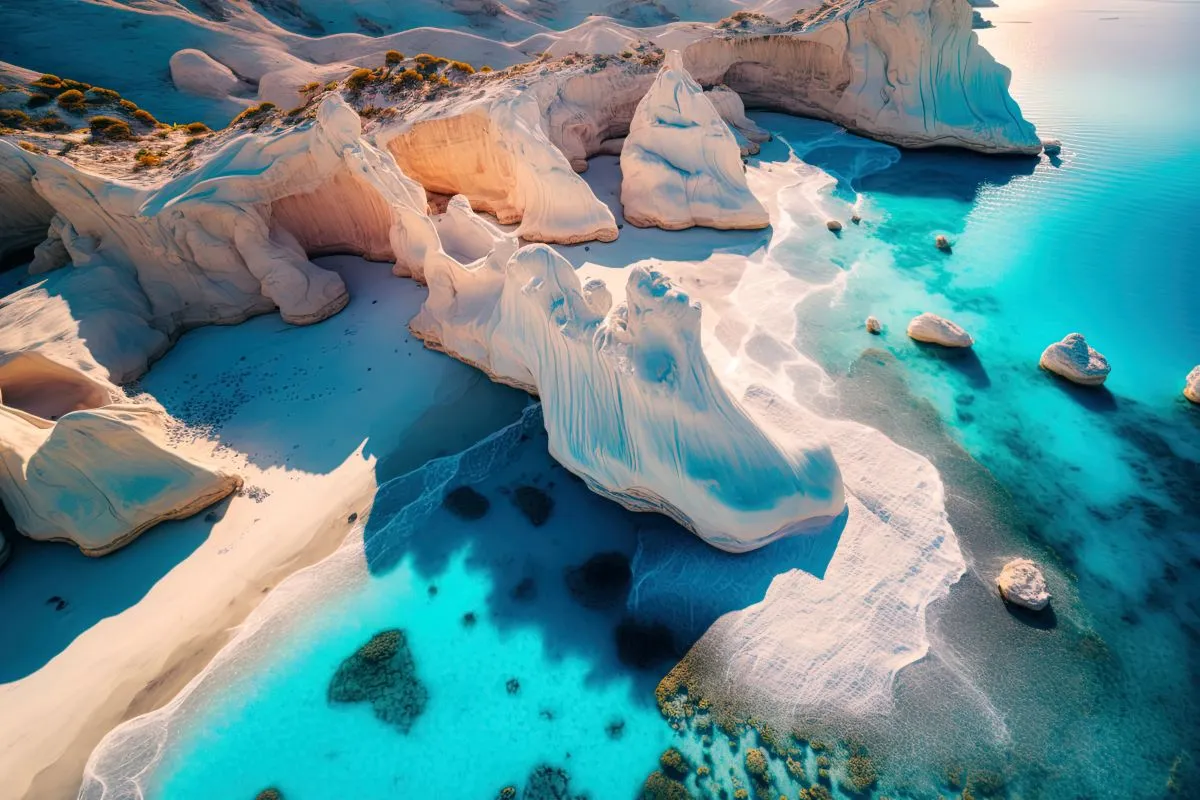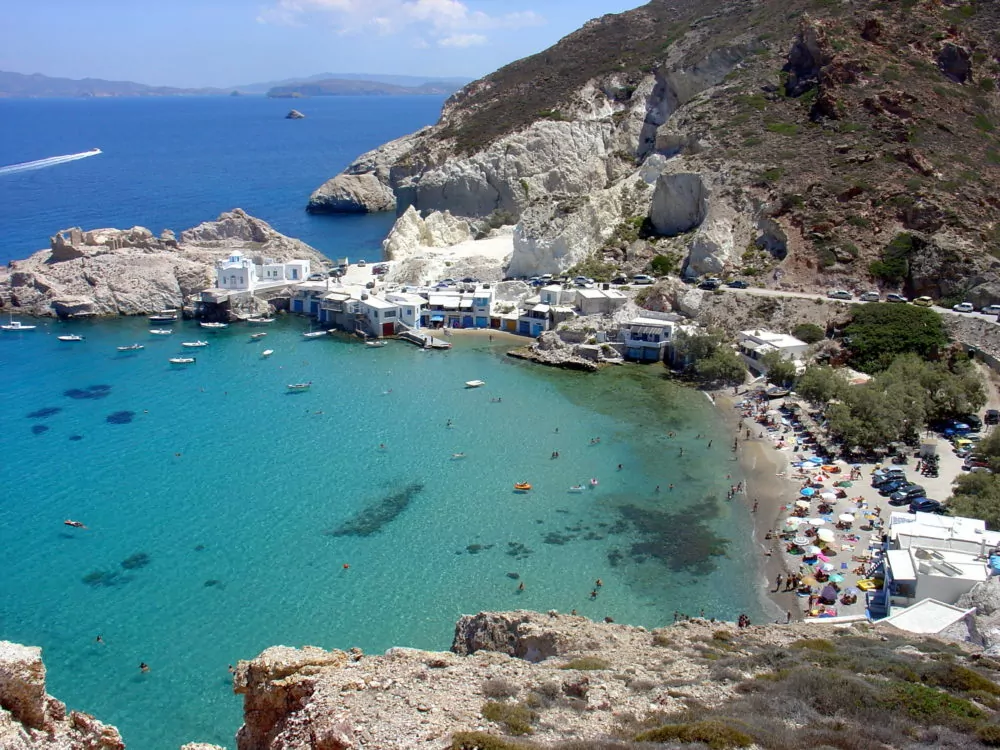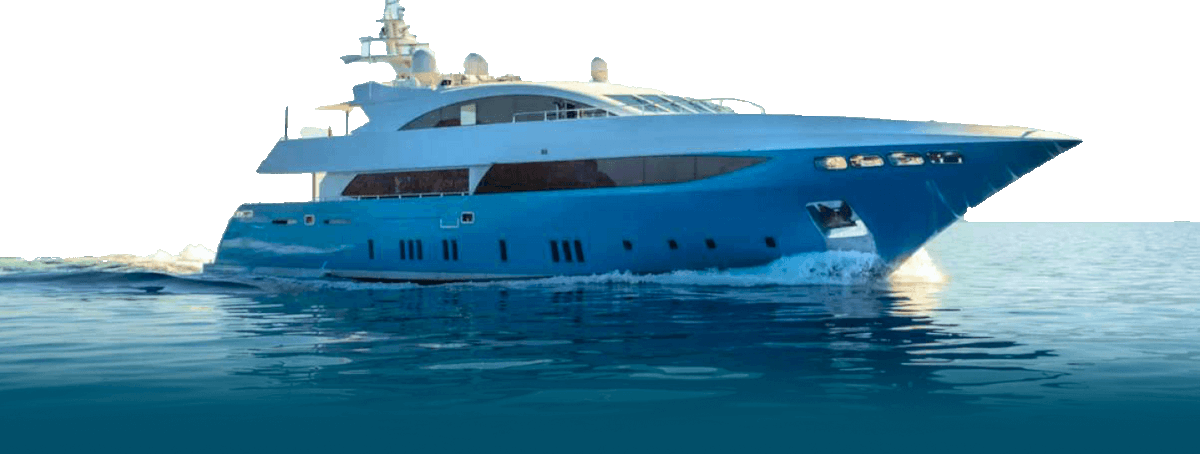
Milos | Natural Beauty and History
The volcanic Milos is the most southwestern of the Cyclades and includes uninhabited Antimilos and Akradies. This island is most famous for the statue of Aphrodite, the “Venus de Milo,” that now permanently resides in the Louvre in Paris. However, a replica is in the Archeological Museum in Plaka.

Climate
Milos has a Mediterranean climate with mild, rainy winters and warm to hot, dry summers. July is the hottest month, with an average temperature of 25.5°C (78°F), and the coldest is January at 10.5°C (51°F).
Places to see on Milos
- Plaka, the capital of Milos. In addition, visit Klima, Pollonia, and Adamas (the port), where you will find traditional Cyclades architecture.
- Milos’ Catacombs. The 1st-century catacombs were used as cemeteries and churches when Rome persecuted Christians. Archaeologists believe that thousands of Christians are buried here.
- Ancient Theatre of Milos. Located near the catacombs and close to Tripiti. Critical historical monuments like this are usually off-limits to the public. However, here, you’ll be able to explore and admire the view freely.
- Old Sulphur Mines is on the island’s east side of Paliorema Beach. Arcades, iron bridges, train tracks with wagons, tunnels, carriages, and old stone homes give an idea of how this unit worked up until 1956.
- The Caves of Milos are Papafrangas, Sykia, and Kleftiko. All of them have stunning white rock formations. Sykia is only accessible by boat through an arched entrance since the ceiling has partially collapsed.
- The Archaeological Museum of Milos in Plaka. Its collections include exhibits dating from the Late Neolithic to the Byzantine period.
Things to do on Milos
- Dive and snorkel. Many underwater caves, rich marine life, rocky islets, and wrecks from WWII provide excellent diving and snorkeling spots.
- Fish. Fish such as the huge Bluefin Tuna are abundant in the surrounding saltwater sea. Head out with a local fishing guide for the best chance of landing the big one.
- Go to the beach. Sarakiniko is the most famous beach and one of the most often photographed landscapes in the Aegean. Paleochori, Agia Kyriaki, Firiplaka, and Tsigrado are other attractive beaches worth visiting.
- Windsurf and kite surf. The most famous wind and kite surfing site is Achivadolimni Beach. It has shallow water and perfect onshore winds. There is an organized windsurfing center at Papkino, a beach close to the port of Adamas.
- Mountain Bike. The excellent network of dirt roads makes Milos the perfect environment for the biking enthusiast.
- Geo-Tourism. Its volcanic origin of Milos offers rare geological beauty. For example, Sarakiniko, the Cave of Papafragas, and two volcano craters provide insight into the island’s geological history.
- Kayak. It is a special treat to discover the impressive coastline and sea caves of Milos in a kayak. Guided tours are available.
- Soak in Thermal Hot Springs. Milos is blessed with numerous thermal springs, known for their healing qualities since antiquity. You can find these springs on the beaches of Alikes, Kanava, Provatas, Paliohori, Skinopi, and Tria Pigadia.
- Rock Climb. There are two climbing fields on Milos. The Akrotiri Vani, a huge clone-shaped rock, and the Glaronisia are considered one of the best in Greece.
- Take part in a festival. Feasts on Milos always include traditional music, dances, local wine, and delicacies and usually take place on church grounds during the summer months.
Gastronomy on Milos
Milos has some amazing cuisine. Try a moussaka, grilled meat such as lamb, pork, or baked octopus. For dessert, have baklava or loukoumades. In addition to hearty foods, try the distinctive local wines at Kostantakis Cave Winery.
